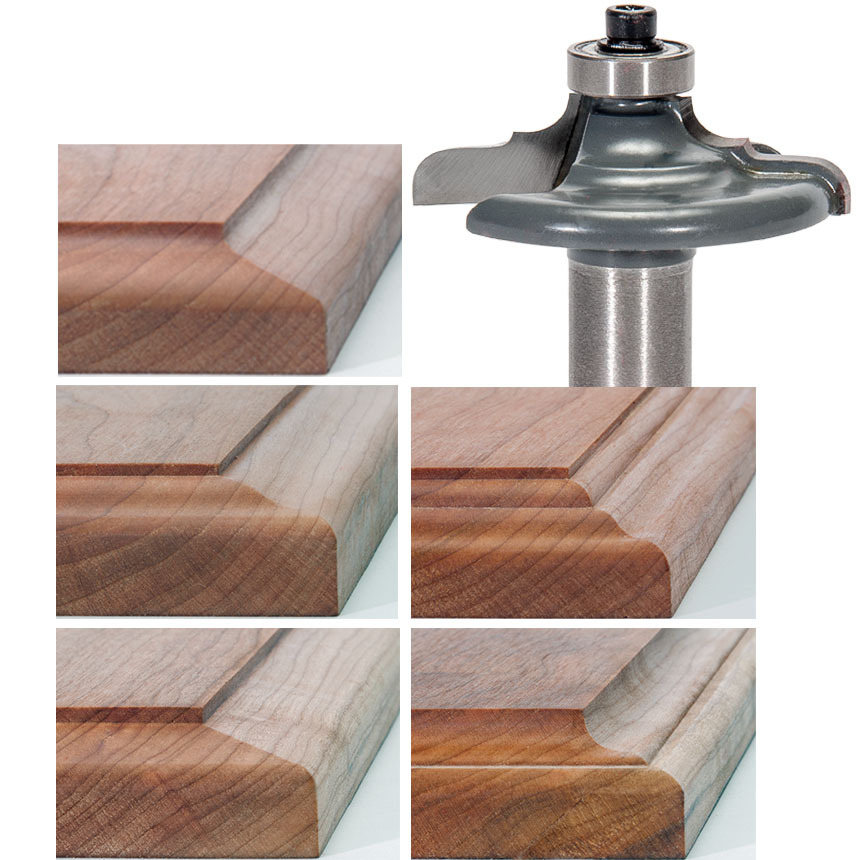Your cart is currently empty!

Router Bits For Woodworkers

Router bits are one of the most important tools in the woodworker’s toolbox. They help you cut and carve wood for a variety of projects, including trim, edging, cabinetry, joinery and more.
There are many different types of router bits, and each is designed for a specific purpose. If you’re working on a project, it’s best to use a bit that’s specifically designed for the job at hand.
Straight Bits
Straight router bits are a workshop staple, making cuts straight into wood to form a groove or dado (a groove across the wood grain) or hollow out an area for a mortise or inlay. These router bits come in a variety of diameters and lengths combinations so there is a bit for every application.
Spiral router bits are a newer innovation that borrows technology from the metalworking industry. Two flutes ground around the body of a spiral bit provide an extra clearance behind the cutting edge that helps reduce tear-out problems.
These types of router bits are typically made from solid carbide so they are extremely sharp and leave a superior cut. They are a great alternative to straight fluted bits.
Flush-Trim Bits
A flush-trim bit is one of the most useful router bits in any woodworking shop. It’s great for edging, veneer trimming, and to easily join edges together.
These bits have a pilot bearing at the tip that’s the same diameter as the flutes, so it guides the cutting arm perfectly around the edge of the surface. This makes them ideal for shelf edging and for replicating patterns from a template when used in a table-mounted router.
These bits also make V-grooves that can be used to engrave designs in flat surfaces or produce a ridged appearance on panels to mimic a beadboard effect. They’re available in a variety of lengths and diameters.
Rabbeting Bits
Rabbeting bits make rabbets on the edge of material, used in many types of joinery. They can be used to create lap joints, cut recesses in cabinets to let in back panels, and create interesting details on built-up molding.
Rabbet bits typically have a pilot bearing that rides along the edge of the material being cut. This minimizes setup time as you don’t have to use a fence.
V-groove bits groove out a v-shaped profile in the material, often used for decorative effects. They come in a variety of diameters and v-groove angles that determine the width and depth of the groove. Some have flat bottoms instead of sharp tips that limit the depth of the cut. Best For: Carving designs into flat surfaces like signs, making shallow grooves and ridges in panels and creating fluted columns.
Slotting Bits
Slotting bits are used to create slot-like openings in wood. They’re also used for flush mounting plaques and frames.
Unlike straight router bits, which trim in a perpendicular pattern, slotting bits are perpendicular to the router base and cut parallel to it. This allows them to cut dadoes that don’t interfere with a door rail.
These snazzy slot cutters have tungsten carbide inserts ground on CNC (computer numerical control) machines for durability and longevity. Their large diameters also help reduce heat buildup on the bit. These bits come in different shapes and sizes to suit your needs.
Roundover Bits
If you’re looking to soften edges on a project, a roundover bit can do the trick. These bits turn square corners into rounded ones, perfect for furniture pieces, molding trim and more.
For serious woodworkers, these bits are one of the most important tools in their toolbox. They make precise cuts in all kinds of materials and help you complete a range of projects from trim to edging and cabinetry to joinery.
You can choose between HSS or carbide-tipped router bits, with the latter offering a superior cutting life and better wear resistance. The former is less expensive but could break down under heat and friction over time.
by
Tags: